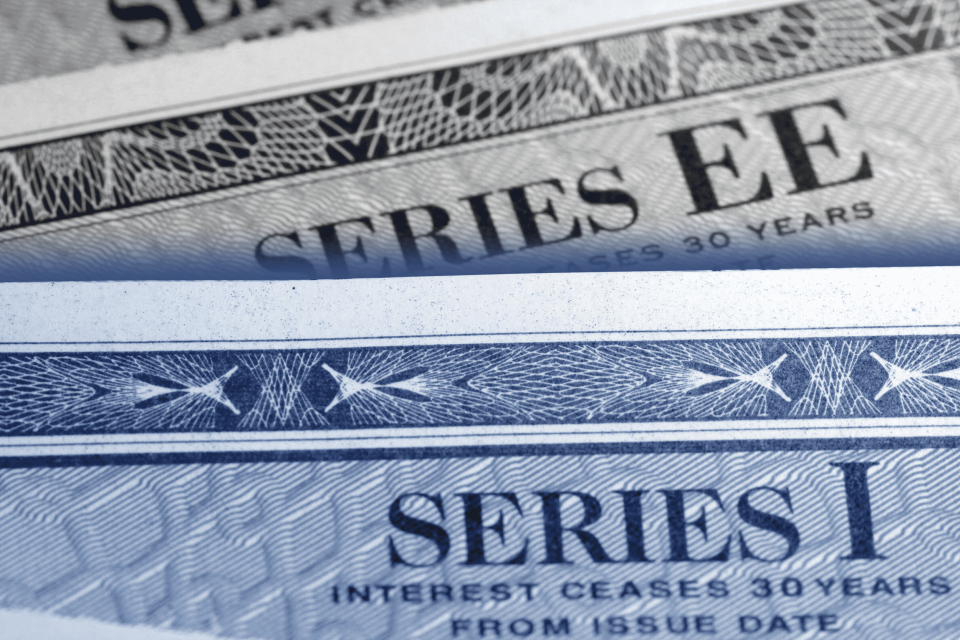WASHINGTON–The Federal Reserve held its key interest rate steady again Wednesday and gave no signal that it plans to lower it anytime soon following a resurgence of inflation early this year.
In a statement after a two-day meeting, the Fed pointedly said: “In recent months, there has been a lack of further progress toward the (Fed’s) 2 percent inflation objective.”
And it repeated its previous assertion that it “does not expect it will be appropriate to reduce the target range until it has gained greater confidence that inflation (now running 3% to 4%) is moving sustainably toward” the Fed’s 2% goal.
If the central bank had planned to trim its benchmark short-term rate at a mid-June meeting it almost certainly would have heralded the move in its statement Wednesday, says Gregory Daco, chief economist of EY-Parthenon.
Fed officials added that the economy “has continued to expand at a solid pace” and “job gains have remained strong.”
Wednesday’s decision was widely anticipated after inflation readings were higher than expected for a third straight month in March. That led Fed Chair Jerome Powell to say “it’s likely to take longer than expected” for officials to gain confidence that yearly price increases are headed sustainably to the Fed’s target.
Powell is expected to deliver a similar message at a 2:30 pm ET news conference.
What is the Fed’s target interest rate?
The Fed’s key rate continues to hover at a 23-year high of 5.25% to 5.5%. Since March 2022, the central bank has hiked the federal funds rate 11 timesfrom near zero to corral inflation but it has left the rate unchanged since last July.
The upshot: Americans will continue to grapple with higher borrowing costs for mortgages, credit cards, and auto and other loans but will also benefit from higher savings account yields.
How much are wages increasing?
More worrisome inflation news came Wednesday when the Labor Department said total compensation for U.S. workers increased 1.2% in the first quarter, up from a 0.9% rise at the end of last year. Faster wage growth could further stoke rapid inflation if employers pass higher labor costs to consumers through price bumps.
That prospect may harden Fed officials’ inclination to hold off on rate cuts. As a result, the Dow Jones Industrial Average tumbled 570 points Wednesday and futures markets that were forecasting just one rate cut this year in September now expect that move to occur in November.
Why does the Fed sometimes lower interest rates?
The Fed raises rates to make consumer and business borrowing more expensive to curtail economic activity and inflation. It lowers rates to stimulate weak growth or dig the economy out of recession.
As recently as late March, Fed officials were sticking to their forecast of three rate cuts this year, Inflation eased significantly the second half of last year as pandemic-related supply chain troubles resolved and the price of used cars, furniture and other goods declined.
Although the economy has been remarkably resilient despite high prices and interest rates, Fed policymakers seemed intent on paring back rates as price gains slowed. Otherwise, high rates could excessively constrain the economy after adjusting for inflation.
What is core inflation right now?
At the time, Powell said an acceleration in price increases in January and February could have been blips and inflation likely was still headed to 2% on “a sometimes bumpy path.”
His tone changed after a report last month on the consumer price index revealed that inflation again ran hot in March. That left core inflation, which excludes volatile food and energy items, stuck at 3.8% for a second straight month. It has barely budged since late last year.
Another core inflation gauge that the Fed follows more closely is running a percentage point lower but also has been stubbornly elevated lately.
As a result, Fed officials have said they’re in no rush to cut rates, especially with the economy on solid footing and employers adding an average 276,000 a month in the first quarter.
Expectations that interest rates would drop sharply this year propelled the stock market to record highs but the disappointing inflation numbers and Fed officials’ reaction to them have reversed some of those gains.
Will inflation calm down?
Goldman Sachs says inflation has been propped up by an overriding trend: Price increases for rent, car insurance, health care and other services are still catching up to wholesale costs that were rising or hot markets. But those markets are now cooling and the slowdown should filter through to consumer prices in the next few months, allowing the Fed to cut rates in July and November as well as several times next year, Goldman says.
Economists at Barclays, however, figure lingering COVID-induced labor shortages could keep pay increases and inflation higher for longer. Some forecasters say that could prevent the central bank from lowering rates at all this year and may even put additional rate hikes back in the table.
Powell has said that a weakening labor market – a scenario that many economists anticipate by mid-year- could prompt the central bank to reduce rates sooner rather than later.
How long will quantitative tightening last?
The Fed on Wednesday also said it will slow the pace at which its $4.5 trillion in Treasury bond holdings has been shrinking. The Fed has allowed up to $60 billion in Treasuries to roll off its books each month by not reinvesting the proceeds from the assets as they mature.
The Fed bought the securities to push down long-term interest rates as the economy teetered during the pandemic. Shedding them has drained some cash from the banking system and put modest upward pressure on rates.
The Fed said it will slow the monthly run-off from its balance sheet to up to $25 billion. Rather than lower long-term rates, the move is designed to ensure there are enough cash reserves in the banking system to allow the Fed to control short-term rates. When the Fed similarly shrank its balance sheet in 2019, low cash reserves disrupted the functioning of money markets.
The central bank added that it will continue to allow as much as $35 billion in mortgage-backed securities to roll off its balance sheet each month.
For more on today’s Fed announcement and other economic trends, keep reading:
What is the federal funds rate?
The federal funds rate is what banks pay each other to borrow overnight. It is the target interest rate (technically, a range of interest rates) set by the Federal Open Market Committee, the group that is meeting Wednesday.
If the federal funds rate increases, banks usually pass along that extra cost, meaning it becomes more expensive for businesses and consumers to borrow as rates rise on credit cards, adjustable-rate mortgages and other loans. That’s why the federal funds rate is the key mechanism used by the Federal Reserve to calm inflation.
Simply put, companies and consumers don’t borrow as much when loans cost them more, and that means an overheated economy can cool, and inflation may dip.
– Daniel de Visé
Bitcoin price
The price of bitcoin plunged nearly 6% to about $57,346 in the 24 hours through 10:30 a.m. ET on Wednesday, according to CoinDesk.
That price is far below bitcoin’s all-time high of $73,835.57 set on March 14. But bitcoin is up 27.55% this year to date.
Bitcoin is volatile. And the cryptocurrency just registered its worst month since November 2022, CoinDesk reports.
Like other investments, bitcoin has been dogged by dwindling hopes for an interest-rate reduction by the Fed, and by a “stagflationary feel” in the national economy, according to the cryptocurrency news site.
Bitcoin’s 16% drop in April was its worst showing since late 2022, when the crypto exchange FTX collapsed.
– Daniel de Visé
How is the S&P 500 reacting?
Stocks were mixed Wednesday afternoon, as investors exercised caution ahead of the Fed’s interest-rate announcement.
The Dow Jones Industrial Average rose 0.30% at 12:40 p.m. Eastern Time. The S&P 500 slipped 0.27%. The NASDAQ was down 0.36%.
Earlier this year, the prospect of three interest-rate cuts in 2024 had juiced the stock market and led analysts to boost their economic growth forecasts.
Stocks tumbled following disappointing inflation reports in April. But they’ve partly rebounded in the past week on strong earnings from Big Tech companies.
– Daniel de Visé and Paul Davidson
Will mortgage rates ever be 3% again?
Probably not anytime soon.
A delay in interest-rate cuts means that mortgage rates will remain elevated through the summer buying season, economists say. Mortgage rates are influenced by more than Fed rate cuts, but they tend to follow the Fed’s footsteps.
“A later start to Fed rate cuts than we anticipated will push the fall in mortgage rates and recovery in activity into the second half of the year,” said Thomas Ryan, property economist at research firm Capital Economics. He forecasts mortgage rates will drop to 6.5% by year’s end.
The average rate on a 30-year fixed mortgage rate is 7.77%, as of May 1. The 15-year fixed-rate mortgage rate is 6.98%.
Keep in mind that even if you get a cheaper mortgage rate later this year, home prices may be 5% higher than in 2023, Ryan said. Housing supply will remain limited, because people who locked in lower mortgage rates will be reluctant to sell and pay a higher mortgage rate on a new home.
Surveys even suggest it’s better to rent than buy a home almost everywhere now, if you’re not in a hurry.
– Medora Lee

What is the interest rate on I bonds?
I bonds are low-risk investments, linked to inflation, considered a safe bet in volatile times. The Treasury sets new interest rates for I bonds in May and November. Those rates are good for six months.
The current I bond interest rate is 4.28%, announced this week. If you buy some I bonds today, that rate will hold until October 31.
Issued by the government, I bonds are considered a relatively reliable investment, especially when inflation is running high, which it has been in the last couple of years. The bond’s interest rate has two components: Part of it is fixed, and part varies with inflation.
If you buy I bonds, plan to keep them. You can cash them out after a year, but you will be penalized three months’ interest for bonds that are less than five years old.
– Daniel de Visé
APR vs. interest rate
Once the Fed makes its move on interest rates, or doesn’t, the next question is: What does it mean for consumers?
Federal action on interest rates ripples across the economy, affecting everything from mortgages and auto loans to credit cards. It also affects the annual percentage rate, or APR, on any loan.
What’s the difference? An interest rate is what you pay the lender to borrow the money, expressed as a percentage. The APR, also a percentage, is the interest rate plus any additional fees charged for the loan. The APR is generally higher.
One piece of good news for consumers: The APR on new credit cards held steady at 24.66% in April after nearly two years of increases, said Matt Schulz, credit analyst at rate comparison site LendingTree.
The bad news: That’s tied for the highest rate since LendingTree began tracking monthly rates in 2019, and it’s not likely to drop with Fed rate cuts on hold, he said.
– Medora Lee and Daniel de Visé
This article originally appeared on USA TODAY: FOMC meeting today: Interest rates stay unchanged; no hint on cuts
Signup bonus from





